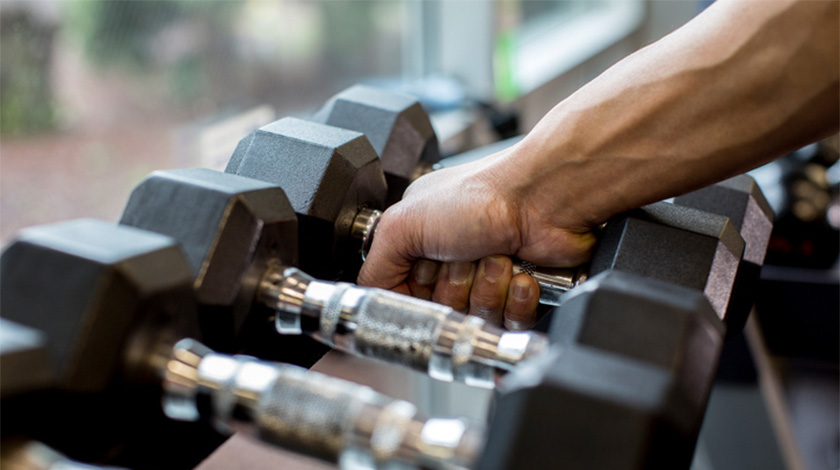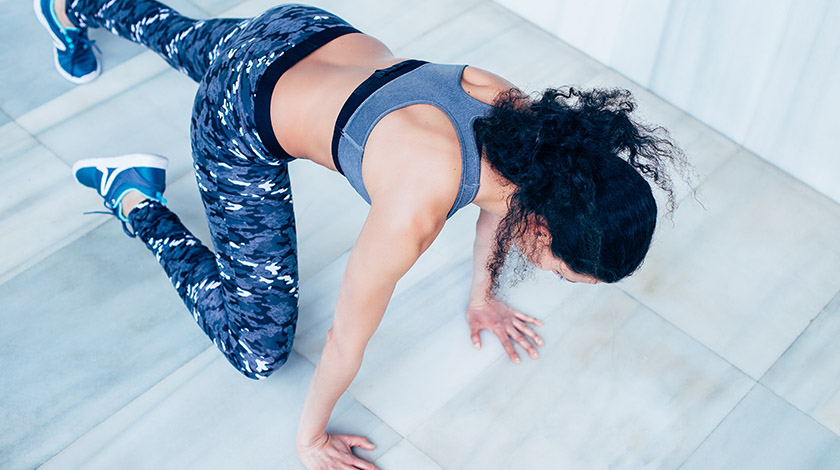Have you ever spent hour after hour pounding away on the treadmill, only to find that your body remains stubbornly resistant to change? It might be time to give High-Intensity Interval Training (HIIT) a try. We've been conditioned by media misinformation and exercise myths to believe that losing weight requires punishing and time-consuming cardio sessions. However, recent studies have consistently found that HIIT, despite taking less time than traditional aerobic workouts, is not only more efficient at burning fat, but also more or equally effective at improving cardiovascular fitness.1 With HIIT, less might just be more!
What is interval training?
Interval training describes any form of exercise that involves alternating between bursts of high-intensity physical activity, and periods of low-intensity activity or complete rest. Common examples include weight training, sprints and even martial arts such as boxing or Muay Thai.
Why interval training?

1. Aerobic fitness
Modern awareness regarding the many benefits of HIIT can generally be traced back to the research of Professor Izumi Tabata in the 1990s. While working with the Japanese national speed skating team, he discovered that athletes who performed alternating periods of high-velocity exercise with periods of low-velocity exercise or rest (in an approximately 2:1 ratio) for 4 minutes, experienced similar aerobic improvements to those who performed low to moderate-intensity exercise for far longer durations five times a week.2
2. Fat-burning
A recent study has found that a short HIIT workout can actually burn more fat than longer aerobic workouts at a steady pace. While a longer workout might burn more calories during the workout itself, HIIT results in elevated heart rate and enhanced metabolism even after the workout has concluded, which translates to higher fat-burning potential throughout the day3 — and this effect lasts up to 24 hours!4
3. Disease prevention
Finally, studies show that HIIT is just as effective at reducing the risk of diabetes and heart disease as more traditional cardiovascular workouts. In particular, regular participation in interval training was linked to better insulin resistance and blood sugar control.5
Your HIIT workout

We’ve yet to mention possibly the biggest advantage of HIIT — it saves you a lot of time. Here’s a sample HIIT cardio workout that can be done at home with no equipment. We suggest an interval of 30 seconds of work plus 30 seconds of rest. Do the entire circuit four times to complete the workout in less than 30 minutes.
- Butt Kicker
Lift your heel until it touches your butt. Switch feet quickly back and forth. - Lunges
Take a giant step backwards with your left foot. Bend your right knee until it’s at 90°. Lower your left knee until it is also bent at a right angle. Continue to alternate sides. - Pop Squat
Stand with your feet hip-width apart. Sit your hips back. Jump straight up into the air and land softly back into the squat position. Repeat. - Skater Jumps
Jump sideways with your back foot raised; right hand touching left toe, left hand touching right toe. - Forearm Plank Hold
Place your forearms on the floor, elbows directly underneath your shoulders; arms parallel to each other.Ground toes into the floor. Hold.
What you should know before doing interval training
- A full warmup
Interval training requires using a range of body muscles and an intense energy outburst in a short period of time. Be sure to warm up all your major joints such as neck, shoulders, wrists, legs and so on.
- Do what you can
Since HIIT is geared toward a more intense workout, it is important to set your workout duration and number of exercises according to your fitness level to avoid over-training or risk of injury. The point is to go at your own pace and do what you can.
- Focus on full-body movements
Focus on exercises that work your entire body such as squats, push-ups, mountain climbers, burpees and more. In this way, the muscles of your whole body can be trained.
- Be aware of over-exercising
Interval training places a lot of stress on your muscles, so it is normal to experience muscle soreness a few days after your training. On the other hand, excessive fatigue, restlessness and exercise-related injuries are some of the signs of over-exercising that you need to be aware of. Try to rest more or replace interval training with less intense workouts such as yoga.
- Keep the intervals short
Your should keep the intervals short - 20 to 60 seconds long ideally, to push yourself to the max. Increase your reps or add more weight during a given interval if you are looking to challenge yourself.
As always, consult a physician before embarking on any HIIT program, especially if you're pregnant or have a chronic illness. Safety first!

